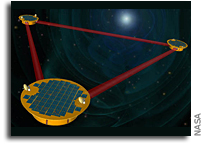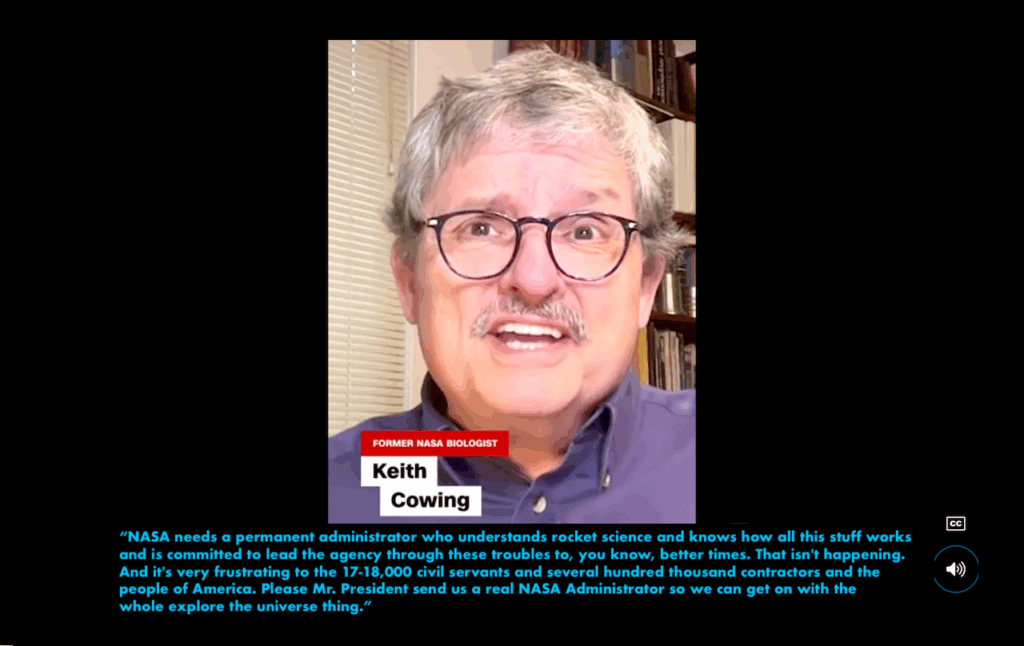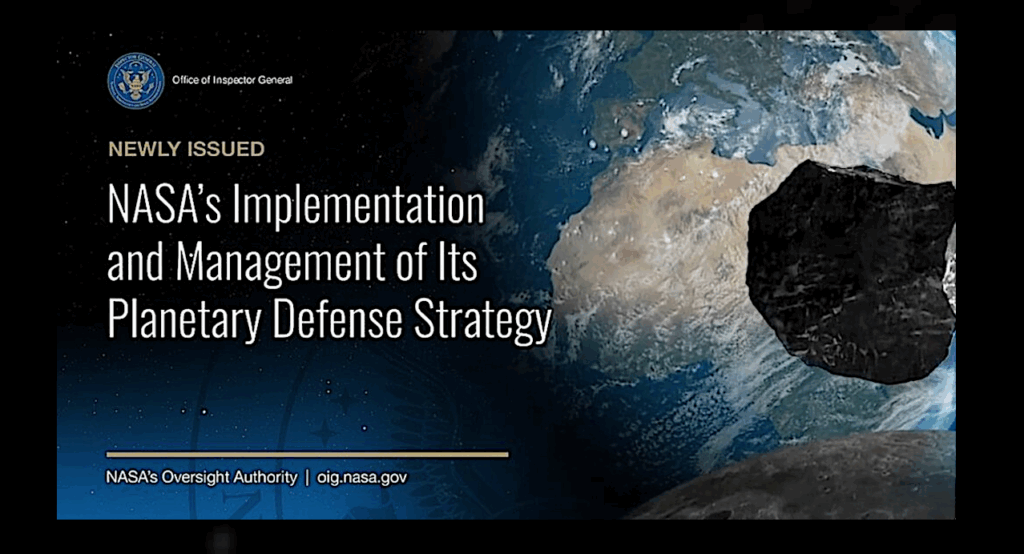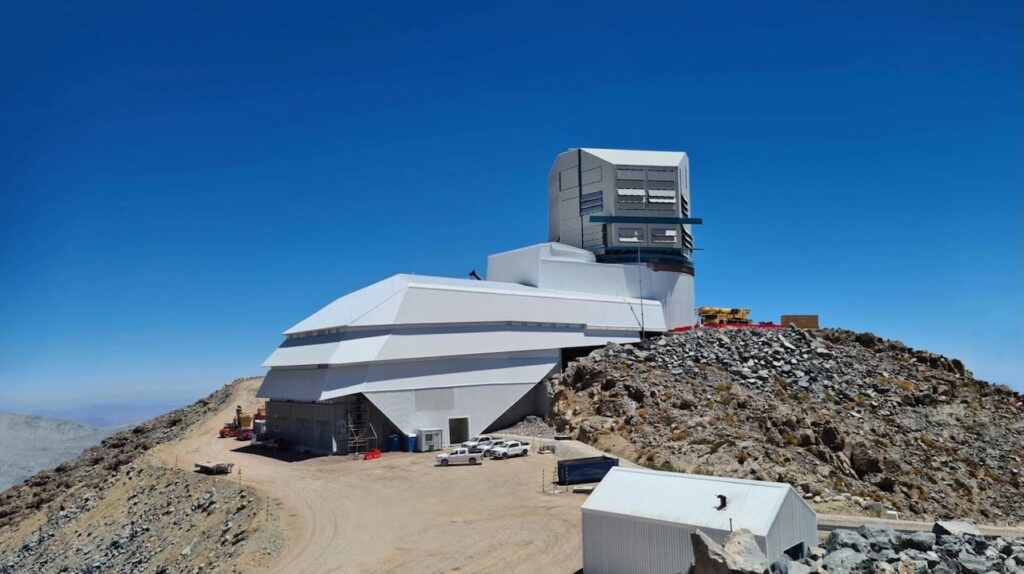NASA Likes LISA Again

NASA moves to rejoin sped-up gravitational wave mission, Science
“This week, at the 11th LISA symposium in Zürich, Switzerland, a NASA official said he was ready to rejoin the LISA mission, which the agency left in 2011. Meanwhile, ESA says it is trying to move the launch of the mission up several years from 2034. “This is a very important meeting,” says David Shoemaker, a gravitational wave physicist at the Massachusetts Institute of Technology in Cambridge. … on 15 August, a midterm assessment of the National Academy of Sciences’s (NAS) 2010 Decadal Report, which reviews U.S. priorities for astronomy and astrophysics, strongly recommended NASA to restore support to the space observatory this decade, and to help restore the mission to its original full capacity.”









It’s an incredibly important piece of research into fundamental physics, a field where experimental results are notoriously difficult or present gargantuan budgets. Or both.
So much about the Universe we find ourselves inhabiting is completely, absolutely unknown to science; surely ‘gravity’ as an outlier to current explanations of known forces leads the pack.
Let’s hope that NASA is able to write the check this time.
Unless I’m very much mistaken (it happens, and I hope I am here) LISA would be increasing deaf to GWs striking with an angle of incidence perpendicular to the plane of the triangle.
Given that LISA is going to be built just once in our lifetime, I’d much rather see LISA as four instruments flying in the shape of a pyramid to make LISA better able to detect GWs from all directions.
My understanding as well. Still, the Universe being the same in all directions one would expect results at any angle to suffice.
Not so on account of the return path. The phase shift in the signals gives you the direction
NASA’s contribution to LISA is likely to be small. ~ $150M spread over many years. 2034 is now the LRD; but everyone expects that to slip to the right. Still, GW science offers amazing breakthroughs in our understanding of the fabric of the Universe!
150 million is the current junior partner level. The article speaks of becoming senior partner. That would involve dipping deeper. This would be great news if it manifests as true but we have been here before. Webb ate the seed corn the last time, killed LISA and put the hurt on Exomars. It is still chewing it’s way through NASA”s budget. So we shall see. Timing is interesting…. ministerial coming up. Kite flying?
Also Europa-Jupiter System Mission. That was supposed to be our half of a dual-spacecraft mission to Jupiter. We bailed on it, and ESA had to significantly revise their Ganymede orbiter into the mission which is now JUICE. Then we changed our minds and are building the Europa Multiple Flyby mission.
Honestly, I’d be happy keeping the US commitment to LISA at $150 million, as long as we really mean it and stick to it. If we promise more and don’t deliver, we’d be adding to a pre-existing reputation as an unreliable partner.
Forgot JUICE. A 150 contribution would not really enable an increase in the mission capability(A billion dollar class mission). We really need to up the SCM count to do that. That is what will cost the money as each one will require a VEGA launch.. actually probably something bigger as the Pathfinder was subscale and had no telescopes.. The pathfinder was a 500 kg SCM with about 2000 kg all up. So probably + 50% in mass, up to 3000 kg for 3 to 4 units… VEGA evolved? 2 per A5? Dunno what the plan was…
I know $150 million wouldn’t add much. But I’d rather see the US as a small, reliable partner than people who promises to be a major partner and then fail to deliver on that promise.
And don’t forget IXO, NASA withdrew from that too (now ATHENA and planned to be launched in 2028). In fact, all three L-class missions in ESA’s Cosmic Vision program started their life as joint missions. Oddly enough NASA invited ESA last year to make a 500 mil. $ contribution to the Europa mission, but that won’t happen. The spending schedules of both agencies are currently incompatible.
LISA could rival COBE in importance and impact.
I couldn’t readily find a list of when each of the major types of instruments started being used by astronomers, so I put a quick one together. Hard to pinpoint starting dates (do you count the first time infrared could be detected from the Moon and Sun or when it starting providing actual data?) My list probably has as many holes as Swiss cheese so feel free to offer corrections. I left off cosmic rays since as far as I know we don’t have a way (yet) to pinpoint specific origins (AMS is more of a physics instrument than an astronomical instrument AFAIK).
But the gist of it is that this year a whole new way to look at the universe became available. And if the past is any prediction, these are baby steps with a lot of exciting discoveries to be made in the coming decades. Would the scientists who made the first ultraviolet detections have predicted how much would eventually be learned just from observing that one region?
1600’s Visible
1860’s Spectroscopy
1920’s Infrared
1930’s Radio
1960’s X-Ray, ultraviolet
1980’s Gamma rays, neutrinos
2016 Gravitational waves
I mentioned COBE for a host of reasons, although your list certainly has merit. What I had in mind was the confirmation of the cosmic background radiation revealing the stunningly consistent appearance of the universe in all directions (the so-called “hole” not withstanding) and support for the Big Bang.
This has implications for those poor cosmologists toiling away few clear opportunities to test (sometimes non-obvious) theories. COBE shed light on inflation as an explanation for the nearly perfect temperature of the universe in all directions, among other findings (although inflation is still and perhaps increasingly questioned). It began to answer the “how” questions as much as the “what” questions.
I’d expect the same from LISA and more than likely two more Nobels.
Agreed, I was including COBE within radio, but probably could add microwave as a separate item in the 1960’s, further emphasizing the significance of the discoveries by COBE that occurred nearly three decades later.
I’m no GW expert all, but shouldn’t’ the LISA configuration be a tetrahedron to recover 3-d wave info?
AFAIK the minimum is 3. Magnitude from two, direction from three and the signal phase shift. The timing of the shift between the three units will give you the direction of the wave source.The waves are 3D. I think the 4th gives you redundancy on this and some sort of hopeful baseline for range….. It has been quite a while since I read the original mission plan. Pathfinder RFI was 2005-2006.
eLISA was looking at just 2 units (cost) at one point. There was some rumblings of being able to get some direction info from them…. not sure how that would work. I wasn’t really paying attention at that point, 2034 was outside my personal event horizon. That serves me right.
I might be missing something about gravitational waves, but I’m fairly sure measurements at four locations are required for full sky coverage. Three points define a plane, and if the wave vector is perpetual to that plane, all three spacecraft would experience the same acceleration at the same time. Since measuring gravitational waves depends of differential acceleration, that just wouldn’t do.
Not an instrument guy but I had a quick run through my notes( old and a bit flaky) and the original LISA was a three identical ship mission. Each ship had two masses and two telescopes meaning 6 independent measurement legs inclined to the ecliptic, 50 million km leg length (resolution issue?). Range from 0.1 – 100mHz….that’s a little m. So plenty of integration time there. Don’t think there would be a resolution issue on triangulating the source. eLISA cost descope was a mother and two daughters affair. Two scopes and masses on the mother, one each on the daughters. 10 million leg length (min resolution for science heads). So only 4 independent; admitted erosion of angular resolution.
4 was never on the cards… probably just some early concept art…